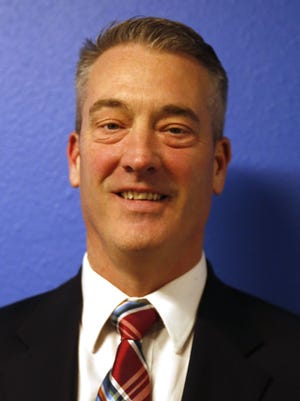Opinion: Aztec, Durango mayors call for tough methane regulations

As elected officials in Durango, Colorado, and Aztec, New Mexico, we each serve communities that are very different. But what we have in common is a 2,500-square-mile problem that affects our shared economy, watershed and airshed. The Four Corners methane cloud is the largest source of methane pollution in North America and the reason why local, elected officials from New Mexico and Colorado are working together in support of strong, statewide methane regulations in New Mexico that will reduce this pollution and hold the oil and gas industry accountable.
As elected leaders, we understand the important role the oil and gas industry plays in the economic strength of our region. But a prosperous, sustainable community requires more than jobs, and the industry needs to do its part to protect public health, the environment and our quality of life. Methane waste and pollution from oil and gas operations is impacting air quality, damaging the climate for future generations and wasting millions of dollars in taxpayer-owned revenue for needed services.
“Home to the highest concentration of atmospheric methane in the United States” is not a title any community wants to have, but it’s the truth for this region. In 2014, NASA discovered a cloud of methane – a greenhouse gas more than 80 times more potent than carbon dioxide – the size of Delaware hovering over the Four Corners region. The pollution was attributed largely to the oil and gas industry, and subsequent studies have reaffirmed this fact.
In response, Colorado became a model state by placing limitations on methane emissions from oil and gas operations – a move that did not curtail the industry – but New Mexico is lagging behind with outdated, inadequate measures for controlling methane waste and other industry emissions. Meanwhile, oil and gas operators in the state release more than 1 million metric tons of methane annually through leaking, venting and flaring natural gas. Needless to say, this methane and ozone pollution doesn’t stop at state lines and affects New Mexico’s neighbors.

According to the American Lung Association’s latest annual report, San Juan County, New Mexico, is at risk of violating federal ozone standards, and La Plata County, Colorado’s ozone levels have been moving upward. That puts our children and the elderly at higher risk for respiratory diseases like emphysema and asthma.
New Mexico’s methane emissions also have the same short-term climate impacts as 22 coal-fired power plants or 28 million automobiles. That means longer, more intense wildfire seasons and more drought for both our states. And when natural gas leaks from faulty equipment or is vented or flared, it costs our states millions in royalty and tax revenue that could fund important public infrastructure, services and programs to improve the economic viability and public health of our communities.
From a revenue perspective, New Mexico loses nearly $43 million in state tax and royalty revenue and U.S. taxpayers miss out on over $10 million in revenue from energy waste on public lands in New Mexico, which is money that could and should be funding schools and public infrastructure. Oil and gas companies operating on the Navajo Nation also waste about $3.4 million on the reservation and up to $895,000 in forgone royalty payments every year.
It’s time for New Mexico to step up and cut methane emissions for the sake of its residents and neighbors. We applaud Governor Lujan Grisham for her leadership and commitment to protecting public health and addressing climate change by creating nationally-leading methane waste and pollution regulations. We also thank her for the opportunity to participate in a local public hearing in Farmington on Monday.
The July 29 meeting is the first of three public stakeholder meetings on the methane rulemaking process scheduled this summer throughout New Mexico. This is an important opportunity for all of us who love the Four Corners region to let our voices be heard about the need to move forward this year to reduce methane emissions. Working together, across state lines, across party lines, we can protect this amazing place we call home.
Victor Snover and Melissa Youssef are contributors to Western Leaders Voices, a program of Western Leaders Network that helps amplify the voices of local and tribal elected leaders on conservation issues in the West. Mr. Snover is the mayor of Aztec, New Mexico, and Ms. Youssef is the mayor of Durango, Colorado.